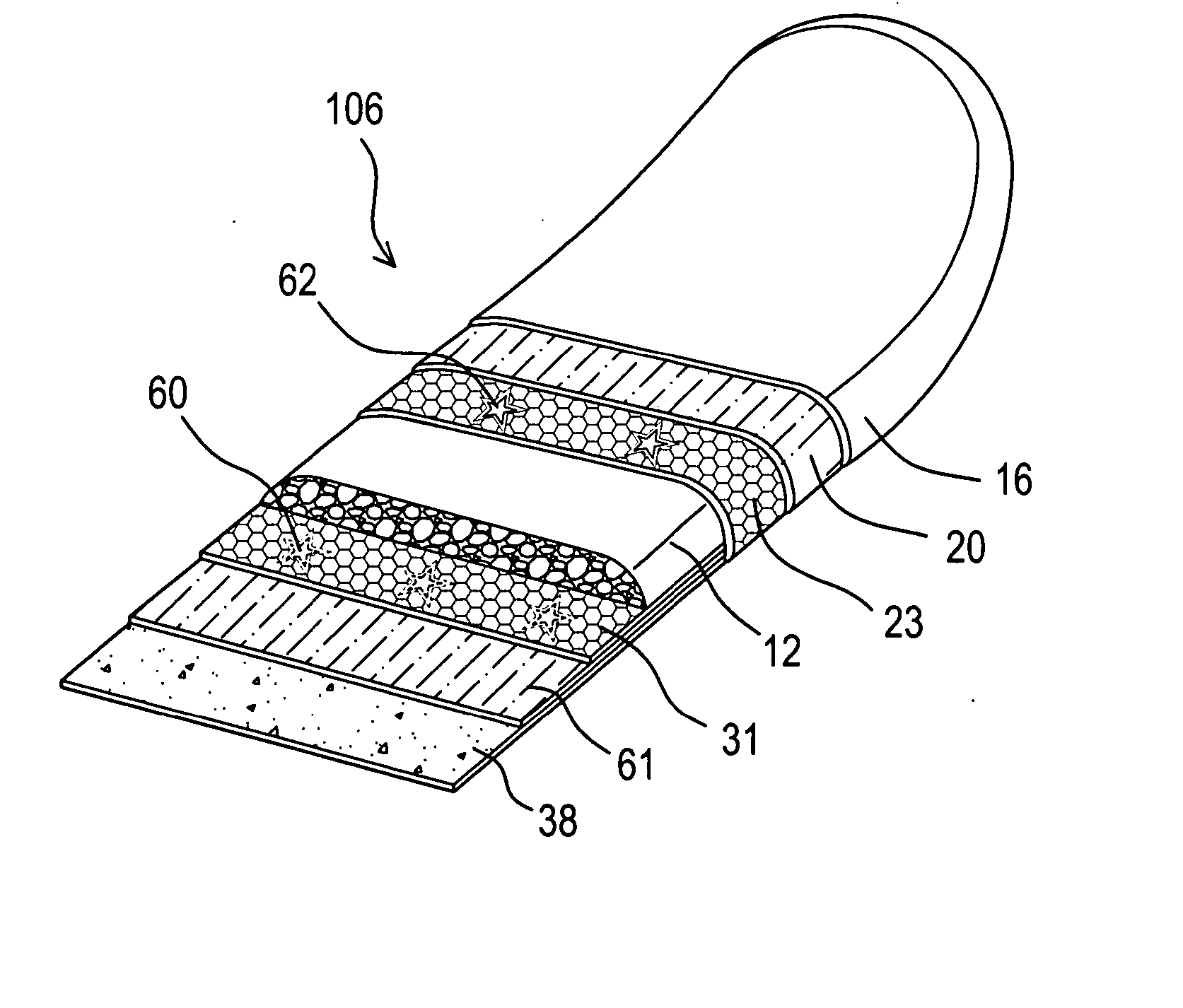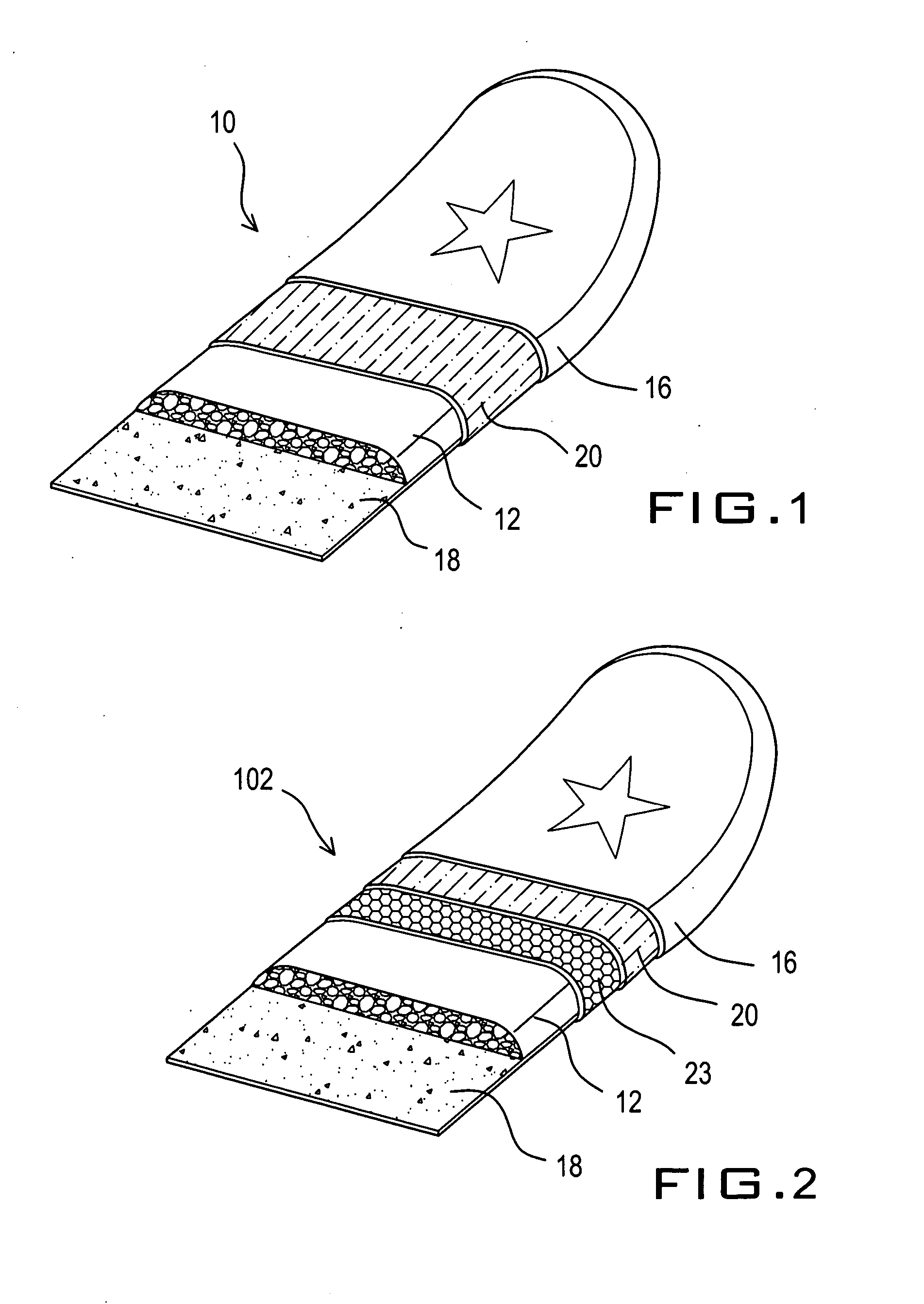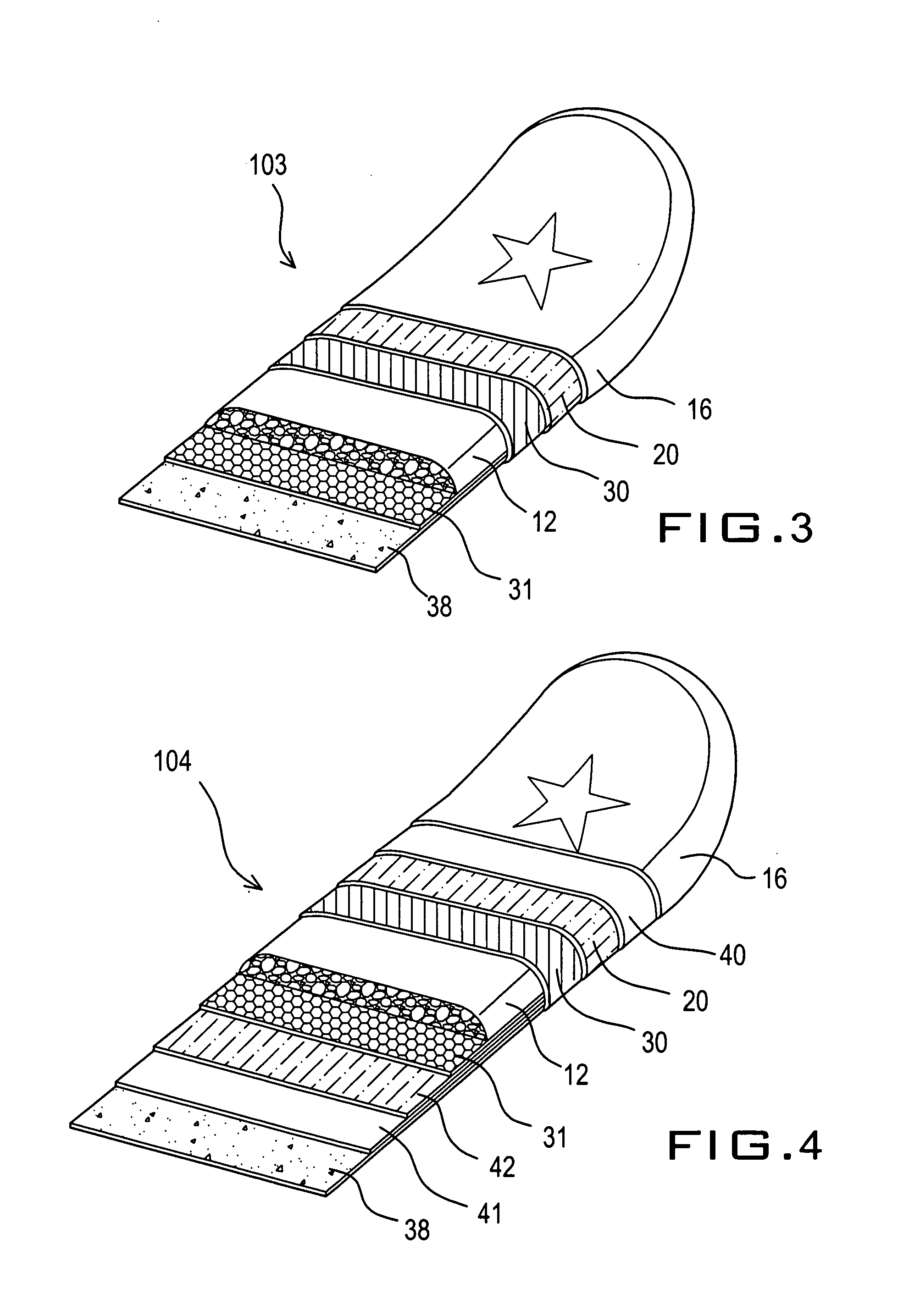Multi-layer sports board with graphic imprinted skin
- Summary
- Abstract
- Description
- Claims
- Application Information
AI Technical Summary
Benefits of technology
Problems solved by technology
Method used
Image
Examples
first embodiment
[0029] With reference to FIG. 1, a sports board 10 according to the present invention comprises a foam core 12, a plastic film 16, a first pattern, and a bottom sheet 18. Foam core 12 has a thickness of between 0.5 and 2.5 inches, and preferably a thickness of 1 inch. Foam core 12 has a density in the range of 1.5 to 4 lb / ft3, and preferably a density of 2.2 lb / ft3. The plastic film is a graphically-imprinted polyolefin film. The graphics on layer 16 are imprinted using any of several conventional processes for printing. An example of such a process is corona printing, in which an electrical discharge temporarily alters the surface molecules of the polyethylene film, allowing inks to adhere to the film. Layer 16 has a thickness of between 0.02 mm and 0.15 mm, and preferably a thickness of 0.07 mm. Layer 16 has a density in the range of 0.89 to 0.98 g / cm3, and preferably a density of 0.95 g / cm3. The bottom sheet 18 is made of polyethylene sheet and provides an outer slick running sur...
second embodiment
[0032] In FIG. 2, a sports board 102 according to the present invention comprises five layers of material. The four layers are the same as the board 10 of FIG. 1 with an addition of layer 23 of polyethylene foam. Layer 23 has a thickness of between 1 and 5 mm, and preferably a thickness of 3 mm. Layer 23 has a density in the range of 4 to 10 lb / ft3, and preferably a density of 6 lb / ft3. Layer 16 is preferable a polyethylene film.
third embodiment
[0033] In FIG. 3, a sports board 103 according to the present invention comprises six layers of material including the foam core 12, graphically-imprinted polyethylene film 16 and adhesive resin film 20 as used in the board 102 of FIG. 2. However, bottom sheet 38 is made of polyethylene into a thickness of between 0.1 and 2 mm, and preferably a thickness of 0.35 mm and a density in the range of 0.89 to 0.98 g / cm3, and preferably a density of 0.95 g / cm3.
[0034] Layer 30 is a closed-cell polyolefin foam sheet, preferable polypropylene foam sheet. Layer 30 has a thickness of between 1 and 5 mm, and preferably a thickness of 3 mm. Layer 30 has a density in the range of 4 to 10 lb / ft3, and preferably a density of 6 lb / ft3. Polypropylene foam has higher rigidity than polyethylene foam at similar density and provide a rigid shell structure to reinforce the foam board in this embodiment. An adhesive resin film layer (not shown in the drawing) is required to facilitate bonding between the pol...
PUM
 Login to View More
Login to View More Abstract
Description
Claims
Application Information
 Login to View More
Login to View More - R&D
- Intellectual Property
- Life Sciences
- Materials
- Tech Scout
- Unparalleled Data Quality
- Higher Quality Content
- 60% Fewer Hallucinations
Browse by: Latest US Patents, China's latest patents, Technical Efficacy Thesaurus, Application Domain, Technology Topic, Popular Technical Reports.
© 2025 PatSnap. All rights reserved.Legal|Privacy policy|Modern Slavery Act Transparency Statement|Sitemap|About US| Contact US: help@patsnap.com



